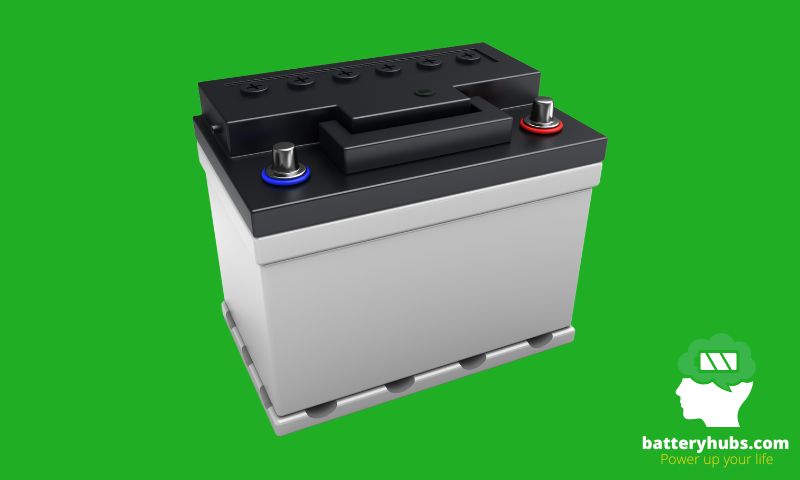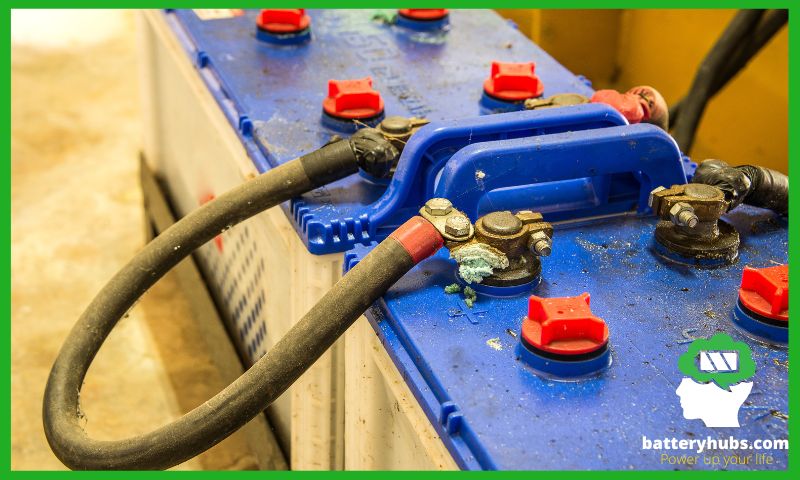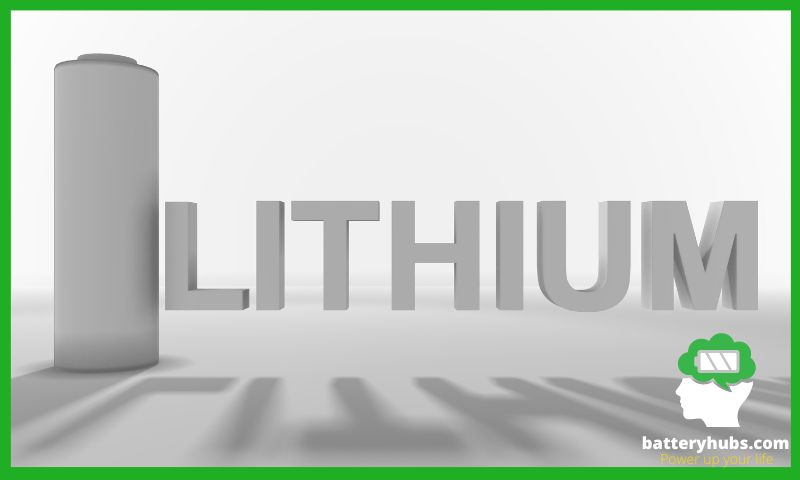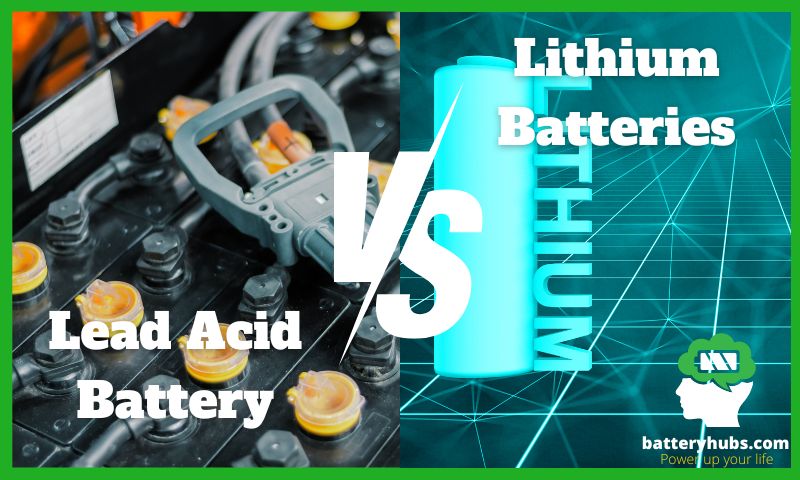Lead Acid batteries are cheaper but heavier, with lower energy density and shorter lifespan. They require regular maintenance. Lithium batteries, however, are more expensive but lighter, with high energy density and longer lifespan. They’re maintenance-free.
As someone who’s spent countless hours tinkering with batteries and exploring their intricacies, I’ve come to appreciate the little powerhouses they truly are. I mean, imagine a world without batteries – no mobile devices, electric cars, or even simple flashlights. Talk about a dark age!
But here’s the thing: not all batteries are created equal. In my hands-on experience, I’ve found that the differences between lead-acid and lithium batteries are not just on a molecular level, but they affect everything from cost to performance. So, if you’ve ever scratched your head wondering which one to go for, buckle up. We’re about to dive deep into the electrifying world of batteries!
Understanding Batteries: An Essential Primer
Well, before we dive into the juicy details, let’s lay some groundwork.
A. Definition of a Battery
A battery, my dear friends, is not just a “thing that powers stuff” (although that isn’t entirely wrong!). In technical terms, a battery is a device that stores electrical energy in chemical form and converts it into electricity when needed. It’s a little like a magical energy box, only it’s science, not magic!

B. Basic Working Principle of a Battery
Now, how does this energy conversion happen, you ask? Well, prepare to have your mind blown! Every battery (yes, every single one) has three key players: two electrodes (anode and cathode) and an electrolyte.
When the battery is connected to a device (say, your smartphone), a chemical reaction kicks off. The reaction forces electrons (those tiny particles that carry electricity) to move from the anode to the cathode, creating an electric current. And voila! Your smartphone springs to life!
“The battery is a perfect example of a fundamental rule of life. You have to give in order to get.”
C. Importance of Battery Technology Advancements
Now, I’ve seen batteries evolve from bulky, inefficient bricks to sleek powerhouses over my career. And let me tell you, advancements in battery technology are as crucial as finding that extra piece of the pie in the fridge at midnight!
Why, you ask? Here’s a quick rundown:
| Importance | Explanation |
|---|---|
| Renewable Energy Storage | With renewable energy on the rise, efficient batteries can store excess energy generated, say, from solar panels, for later use. |
| Electric Vehicles | Improved batteries mean better electric cars, making our roads cleaner and greener. |
| Portable Electronics | From smartphones to laptops, advancements in batteries make devices more efficient and longer-lasting. |
Batteries have come a long way, and there’s still much more to explore! As I always say, in the world of batteries, there’s never a dull moment. Stay tuned as we dive into the nitty-gritty of lead-acid and lithium batteries next!
Lead Acid Batteries: A Deep Dive

Now that we’ve covered the basics, let’s roll up our sleeves and dive into the heart of the matter. And we’re kicking off with a classic: the lead-acid battery.
A. Brief History of Lead Acid Batteries
Lead-acid batteries have been around since the dinosaurs! Okay, I’m exaggerating, but they have been around since 1859. A French physicist, Gaston Planté, was the genius behind the first rechargeable lead-acid battery. Talk about a game-changer!
“The lead-acid battery was the first rechargeable battery in history, and it has set the standard for energy storage ever since.”
B. How Lead Acid Batteries Work?
Now, onto the fun part – how do these age-old powerhouses work? Lead-acid batteries have two lead electrodes: the anode (lead) and the cathode (lead dioxide), immersed in a sulfuric acid solution (electrolyte).
When you use the battery (discharge), the lead reacts with the acid, creating lead sulfate and freeing up electrons. These electrons rush around like kids in a candy store, creating an electric current. Charging the battery reverses the process, bringing back our lead and lead dioxide. It’s like a seesaw – back and forth, back and forth!
C. Advantages and Disadvantages of Lead Acid Batteries
Like anything in life, lead-acid batteries have their highs and lows. Let’s lay it all out on the table:
| Advantages | Disadvantages |
|---|---|
| Reliable and well-understood technology | Heavy and less energy-dense |
| Cost-effective | Lower cycle life compared to other types |
| Can deliver high power outputs | Sensitive to incorrect charging and discharging |
D. Common Applications of Lead Acid Batteries
So where might you find these trusty workhorses? Here are a few common applications:
- Car Batteries: Yep, that chunky box under your car’s hood? That’s a lead-acid battery!
- Backup Power Systems: Many UPS (Uninterruptible Power Supply) systems rely on lead-acid batteries.
- Solar Energy Systems: Lead-acid batteries often store excess energy in off-grid solar setups.
Well, that’s the lowdown on lead-acid batteries! Next, we’ll explore a newer, shinier kid on the block: lithium batteries. Buckle up, folks – it’s gonna be a riveting ride!
Lithium Batteries: The Modern Powerhouse

Alright, folks! We’ve had fun with the old-school lead-acid batteries. Now, it’s time to meet the cool, trendy, and powerful lithium batteries. Let’s kick things off with a trip down memory lane.
A. Brief History of Lithium Batteries
The lithium battery was introduced to the world in the 1970s, but it wasn’t until the 1990s that they really took off. Why? Well, that’s when Sony commercialized the first rechargeable lithium-ion battery. Suddenly, everyone wanted a piece of the lithium pie!
“The introduction of lithium-ion batteries has revolutionized technology.”
B. How Lithium Batteries Work?
So, how do these batteries work? Well, in a lithium-ion battery, you have a lithium cobalt oxide cathode and a carbon anode. Instead of a chemical reaction like in lead-acid batteries, lithium-ion batteries work on the movement of lithium ions from the anode to the cathode during discharge (and the opposite during charging). It’s like a dance party, with lithium ions boogieing back and forth between electrodes!
C. Advantages and Disadvantages of Lithium Batteries
Now, let’s get real and talk about the pros and cons of lithium batteries:
| Advantages | Disadvantages |
|---|---|
| High energy density | More expensive than other types |
| Lightweight | Safety concerns if improperly used or disposed of |
| Longer lifespan | Sensitive to high temperatures |
D. Common Applications of Lithium Batteries
And where might you find these modern powerhouses? Here are a few places:
- Smartphones and Laptops: That’s right, the device you’re probably reading this on runs on a lithium battery!
- Electric Vehicles: Ever heard of Tesla? Yep, lithium batteries power those sleek electric cars.
- Power Tools: Many cordless power tools run on lithium batteries for better performance.
Well, there you have it – a deep dive into lithium batteries. Now, hold onto your seats as we gear up to compare these two types of batteries head-on. It’s going to be a clash of the titans, folks!
Lead Acid vs Lithium Batteries: A Comparative Analysis

Alright, my fellow battery enthusiasts, it’s showtime! This is where we pit the trusty lead-acid battery against the sleek lithium battery. Let’s see who comes out on top in this electrifying showdown.
A. Comparison of the Physical and Chemical Properties
Let’s kick off the comparison with a look at the physical and chemical properties:
| Property | Lead Acid | Lithium |
|---|---|---|
| Weight | Heavy (lead’s a hefty fella!) | Lightweight (lithium’s the featherweight champ!) |
| Energy Density | Lower (it’s not a marathon runner) | Higher (it’s got the stamina of a triathlete) |
| Chemical Reaction | Yes (the acid and lead tango) | No (lithium ions are always on the move) |
B. Comparison of Cost-Effectiveness and Sustainability
Next, let’s talk about money and the environment. After all, we all want a bang for our buck and a clean planet, right?
| Aspect | Lead Acid | Lithium |
|---|---|---|
| Cost | Generally cheaper (good for the wallet) | More expensive upfront (but longer lifespan might save you in the long run) |
| Environmental Impact | Recycling infrastructure exists but lead is toxic | Recycling is challenging, but research is ongoing |
C. Comparison of Performance in Specific Applications
And finally, how do these batteries fare in the real world? Well, it depends on what you’re using them for:
| Application | Lead Acid | Lithium |
|---|---|---|
| Car Batteries | Excellent (they love a good road trip) | Not typically used (but who knows what the future holds?) |
| Electronics (like smartphones) | Too bulky and low energy density | Excellent (they’re the life of the party) |
| Electric Vehicles | Not typically used due to weight | Excellent (they’re the star of the EV show) |
Well, that wraps up our head-to-head battle! As you can see, the “best” battery really depends on your specific needs. Just remember, whether you’re team lead-acid or team lithium, all batteries deserve respect and proper care. After all, they power our world!
Decoding the Future of Battery Technology
Buckle up, my fellow power aficionados, because we’re about to take a wild ride into the future of battery technology!
A. Current Trends in Battery Technology
Here’s what’s hot in the battery world right now:
- Solid-State Batteries: These are the new kids on the block. With the potential for higher energy density and safer operation, they’re causing quite a stir. But they’re still in the early stages of development.
- Sustainability: There’s a big push to make batteries more eco-friendly. This means improving recyclability and exploring new, less harmful materials.
- Improved Energy Density: We want our devices to last longer and our cars to go further. So, naturally, researchers are all about squeezing more energy into less space.
B. The Role of Lithium and Lead Acid Batteries in Future Technologies
So, where do our trusty lithium and lead-acid batteries fit into this futuristic landscape?
Lithium Batteries are likely to continue their reign in the realm of personal electronics and electric vehicles. As technologies advance and require more power in smaller packages, lithium’s high energy density, and light weight make it a top contender.
Lead Acid Batteries, on the other hand, may find their niche in grid storage solutions. Their robustness and established recycling infrastructure make them a reliable choice for large-scale energy storage.
C. The Potential Impact of Emerging Technologies on Lithium and Lead Acid Batteries
But as with any journey into the future, there are a few curveballs:
Emerging Technologies like solid-state batteries and new materials could potentially shake up the status quo. They could offer safer, more efficient alternatives to both lithium and lead-acid batteries.
Sustainability Initiatives may also influence the direction of battery development. As the world strives to reduce its environmental footprint, the ability to recycle and the choice of materials used in batteries will become increasingly important.
Well, that’s it, folks! The future of battery technology is an exciting, ever-evolving landscape. Whether you’re rooting for lithium or lead acid, one thing’s for sure – the journey ahead is going to be electrifying!
Conclusion
So there you have it, my friends – a deep dive into the electrifying world of batteries! We’ve explored the inner workings of both lithium and lead acid batteries, assessed their strengths and weaknesses, and even peered into the future of battery technology.
What’s clear is that while lithium batteries are the hotshots in today’s high-tech world, our trusty old friend, the lead acid battery, still holds its ground in many applications. It’s a thrilling race, and only time will tell which technology will lead the charge in the years to come.
But no matter where we’re headed, one thing’s for sure – it’s an exciting time to be in the battery world. Keep your eyes peeled, because the next big breakthrough could be just around the corner.
In the end, it’s not about picking a side. It’s about appreciating the role each type of battery plays in powering our world. Here’s to a future that’s as bright – and as fully charged – as possible!
So, the next time you pick up a device or hop in a car, give a little nod to the batteries that make it all possible. They might not be the stars of the show, but they’re definitely the power behind the scenes!
Remember, friends, knowledge is power – and in this case, literally so! As we continue exploring the expansive world of batteries, it’s essential to keep learning, asking questions, and staying informed.
If you’re still intrigued by our old reliable lead acid batteries, why not deep dive into their fascinating history and the science behind them? Or perhaps you’re curious about their myriad of applications? If so, our comprehensive guide on what a lead acid battery is used for is just the ticket for you.
And for the etymologists among us who are wondering, “Why is it called a lead acid battery?” – we’ve got you covered too! Spoiler alert: it’s all about the materials inside.
As we wrap up, remember: the power of the future lies in our hands, or more specifically, in the batteries we develop and use. Let’s continue this electrifying journey together, because, in the world of batteries, there’s always something new and exciting just over the horizon. Keep the energy high, folks!
